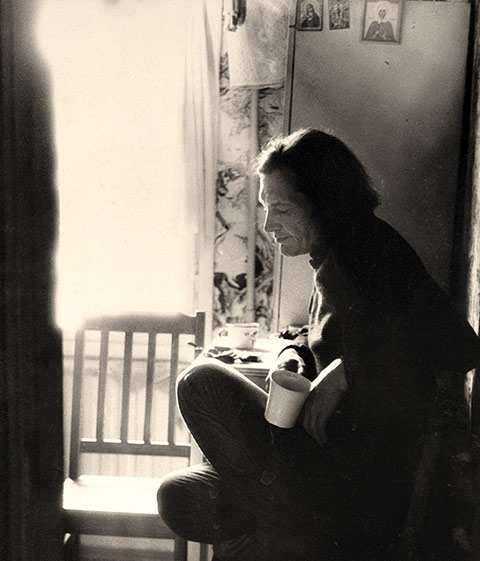Under Soviet Union state censorship, publications required the Communist Party’s stamp of approval. But that didn’t stop people from sharing ideas in ways that circumvented the party apparatus – often at great personal risk. From the 1950s to the 1980s, artists and rights activists in particular used samizdat – a low-tech alternative form of publishing, often typewritten and passed from hand to hand – to communicate with each other and spread information.
One such artist was Oleg Okhapkin, a religious poet shown above in an undated photo in his kitchen. Ann Komaromi, a professor of comparative literature who has curated the world’s largest digital collection of Soviet samizdat journals (142 issues), says Okhapkin’s writing is interesting partly because he foresaw a return to traditional religious values in Russia following the collapse of communism.
None of these homemade samizdat documents, including Okhapkin’s, reached more than a few hundred people. But some became quite famous. The Chronicle of Current Events documented human rights abuses in the Soviet Union from 1968 to 1982, despite numerous attempts by the KGB to suppress it, and became a major source of unofficial information for readers abroad.
Komaromi is reluctant to ascribe much political clout to the literary and artistic journals in the U of T collection, but she believes they served a vital societal function. “These were alternative communities creating a culture of artistic freedom,” she says. And now they’re available for the world to see.
Recent Posts
For Greener Buildings, We Need to Rethink How We Construct Them
To meet its pledge to be carbon neutral by 2050, Canada needs to cut emissions from the construction industry. Architecture prof Kelly Doran has ideas
U of T’s 197th Birthday Quiz
Test your knowledge of all things U of T in honour of the university’s 197th anniversary on March 15!
Are Cold Plunges Good for You?
Research suggests they are, in three ways





